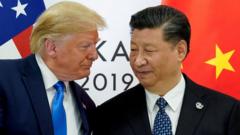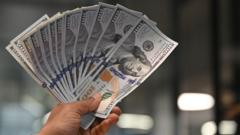As Ghana navigates economic difficulties, its planned national cathedral—a $400 million project initiated under former president Nana Akufo-Addo—has languished, with the site resembling an unfinished construction zone overwhelmed by rainwater. Designed by renowned architect David Adjaye, the project consumed about $58 million of taxpayer funds, raising alarms in a nation already burdened by debt. With local sentiments reflecting outrage over what many view as a "big hole" rather than a monumental structure, voices from the Pentecostal community express concern over the misallocation of resources. The future of this grand vision remains uncertain amid ongoing discussions about the country’s financial stability.
Ghana's Grand Cathedral: A Blueprint of Hope or a Financial Mirage?

Ghana's Grand Cathedral: A Blueprint of Hope or a Financial Mirage?
Ghana's ambitious national cathedral project has become a symbol of political tension and public outrage over financial mismanagement.
While plans for a national cathedral in Accra were designed to emulate the grandeur of iconic landmarks like Washington’s National Cathedral, the reality on the ground tells a different story. The site has seen little progress, with construction halted for years. Local residents, including deep-rooted members of the church community like Praise Chinedu and his brother John, lament the potential consequences of such financial decisions, fearing divine discontent. This project stands at the intersection of aspiration and disappointment, highlighting the challenges Ghana faces in balancing national dreams and fiscal responsibility.
As the country copes with severe economic strain, the fate of this national symbol remains an open question, prompting debate on whether the funds might have been better spent addressing pressing social needs rather than an ornate structure. The cathedral, while a source of pride for some, ultimately reflects larger issues within Ghana’s economy and governance.
As the country copes with severe economic strain, the fate of this national symbol remains an open question, prompting debate on whether the funds might have been better spent addressing pressing social needs rather than an ornate structure. The cathedral, while a source of pride for some, ultimately reflects larger issues within Ghana’s economy and governance.






















